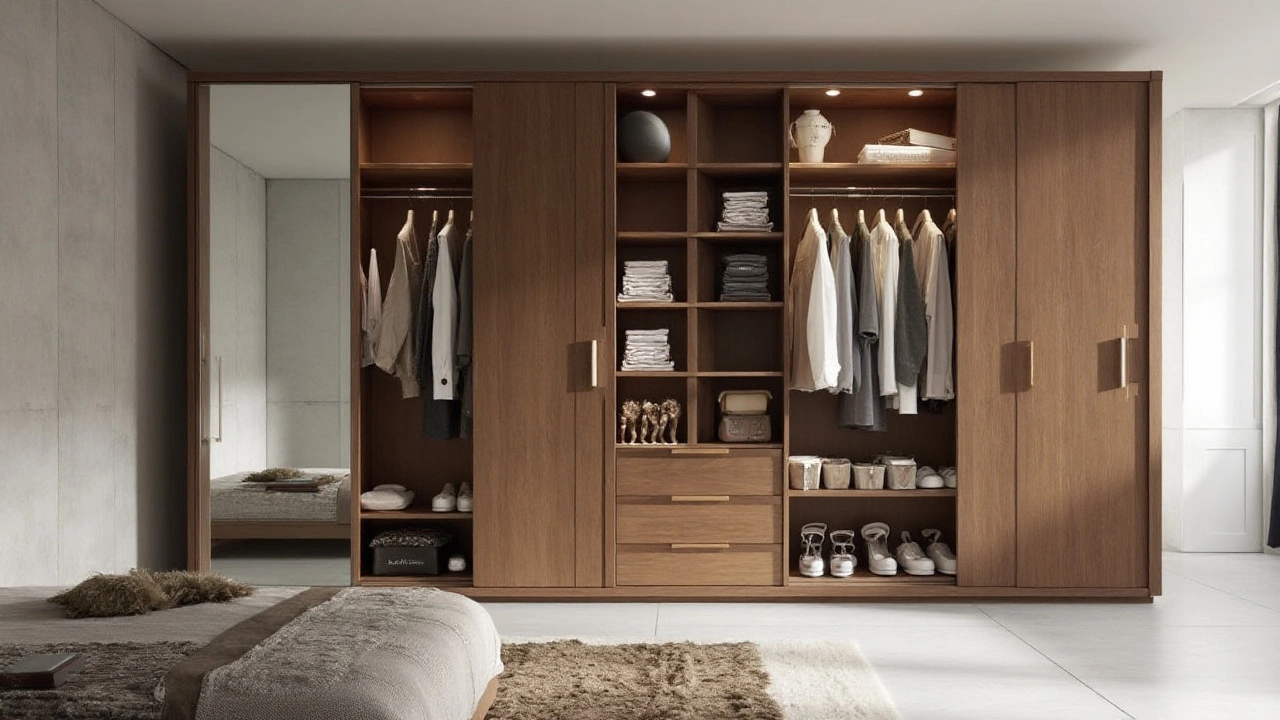Wardrobe Cost: What to Expect and How to Save
If you’re thinking about adding a wardrobe to your bedroom, the first question is usually – how much will it cost? The answer isn’t a simple number because many things shape the price. Knowing those factors helps you set a realistic budget and avoid surprise expenses.
Factors That Influence the Price
Material is the biggest driver. Solid oak or walnut can push a wardrobe into the high‑end range, while pine, MDF, or particle board keep the price modest. Custom‑built pieces with special hardware or intricate doors also add up quickly, as does a larger footprint. A standard two‑door free‑standing unit might start around £200, but a built‑in wardrobe with sliding doors can easily exceed £1,500.
Finishes matter too. A simple paint or veneer is cheaper than a high‑gloss lacquer or hand‑carved detail. Hardware – handles, hinges, glides – varies from basic metal knobs to designer pulls, and each upgrade adds a few pounds per piece. Don’t forget installation: a DIY‑friendly flat pack saves on labor, while professional fitting for a built‑in can cost a few hundred pounds.
Location influences cost as well. Buying from a local carpenter may be more expensive than ordering a ready‑made unit online, but you might save on shipping and avoid extra delivery fees. Some retailers charge extra for rural delivery, so factor that in if you live outside a major city.
Tips to Keep Your Wardrobe Budget Friendly
Start with a clear plan. Measure your space, decide how many hanging rods and shelves you need, and sketch a rough layout. The more precise your plan, the less likely you’ll need costly changes later.
Shop around. Compare prices from high‑street stores, online marketplaces, and second‑hand platforms. You’ll often find a solid‑wood wardrobe at a fraction of the price if it’s gently used. Look for sales around holidays or clearance events – a 30‑40% discount can make a big difference.Consider DIY assembly. Many flat‑pack wardrobes come with clear instructions and only require basic tools. If you’re handy, you can also add custom shelving or paint a plain unit to match your décor, saving on both material and labor.
Opt for modular systems. Brands that sell interchangeable components let you start small and expand later. You might buy a basic frame now and add extra drawers or a shoe rack when your budget allows.
Don’t overlook hidden costs. Remember to budget for transport, especially if the wardrobe is large or heavy. Also, think about accessories like wardrobe lighting, organizers, or extra hanging rods – they improve functionality but add to the total spend.
Finally, weigh long‑term value. A cheaper wardrobe may need replacement sooner, while a well‑made piece can last decades and retain resale value. Investing a bit more upfront can pay off in durability and style.
By understanding what drives wardrobe cost and using these practical tips, you can find a solution that fits both your space and your wallet. Happy hunting!
Why Are Wardrobes So Expensive? The Real Reasons Behind the Price Tag
Wardrobes cost so much because of solid wood, high-quality hardware, custom fitting, and professional labor. Learn why a $2,000 wardrobe might actually be cheaper than replacing a $500 one every few years.
MoreExploring the Cost of Custom Fitted Wardrobes in 2024
Fitted wardrobes can add a touch of elegance and functionality to any room, but knowing the cost is vital before making a decision. This article explores the average expenses involved in installing a custom fitted wardrobe, considering factors such as materials, measurements, and labor. By understanding these elements, homeowners can make informed choices that align with their style and budget. Discover how fitted wardrobes can transform your space with this comprehensive guide.
More

